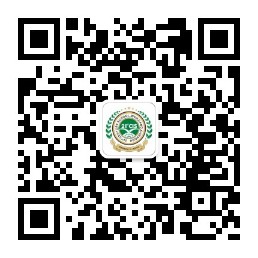7
2024-05
大葱、盆栽、船桨……外教全英文给孩子们上科学课,太有趣了
走进二十一世纪,当你听见一个8岁的孩子用一口流利的英文在课堂上与老师探讨科学知识时,你不用感到惊讶,这是我们的英语与科学的主题融合课。

我校小学主题融合课程采用主题教学理念,为孩子们提供了不同类别、不同层次的跨学科融合的教学,以主题形式进行单元教学。主题融合班会定期开展外教主题融合课,外教“变着花样”给孩子们的成长加码。漂浮与下沉、测量体积与重量、认识植物、制作船桨、用树叶贴画......孩子们在全英文的环境下学习科学课,认识这个“万花筒”般奇妙的世界。
冰块也是水,为什么会漂浮?
因为Density密度。
1年级1班外教课兼具趣味性和知识性,快来一起感受一下吧!
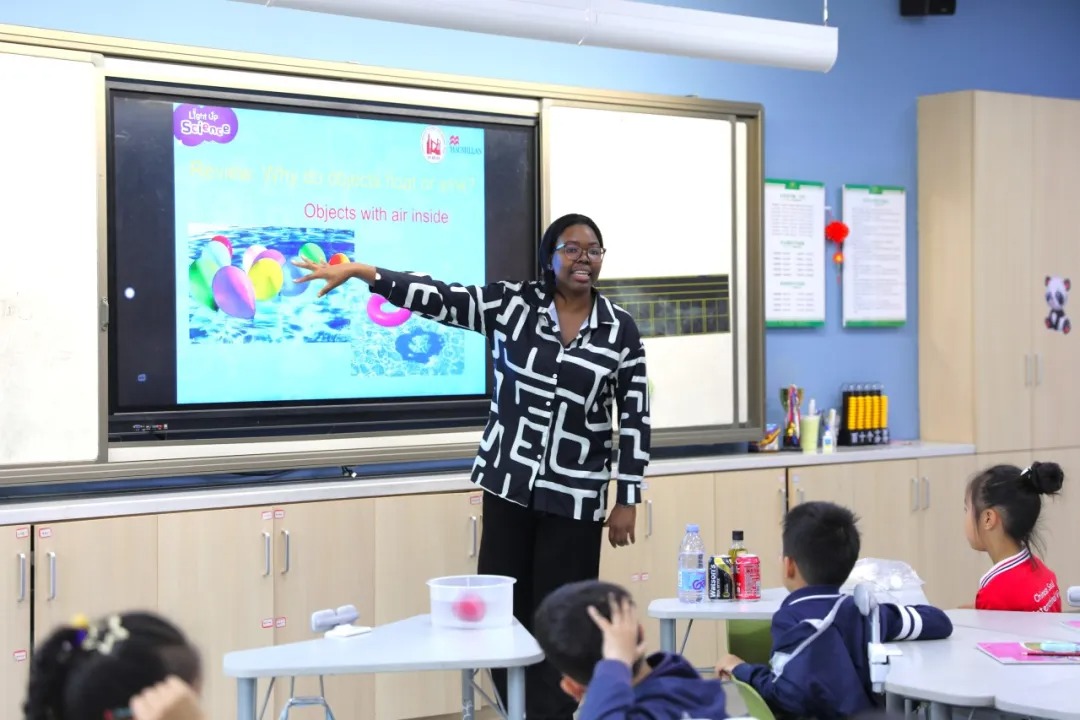
Grace 老师:本节课,我们学习了漂浮的物体和下沉的物体。我们用不同材料、大小和质量的物体进行实验,试图确定哪些物体会漂浮/下沉(在水中),以及它们为什么会漂浮/下沉。然后我们得出结论:因为密度。
Teacher Grace: In this lesson, we learned about objects that float and those that sink. We experimented with objects of different materials, sizes and mass to try and determine which objects would float/sink (in water) and why they float/sink. Then we have the conclusion: because of density.
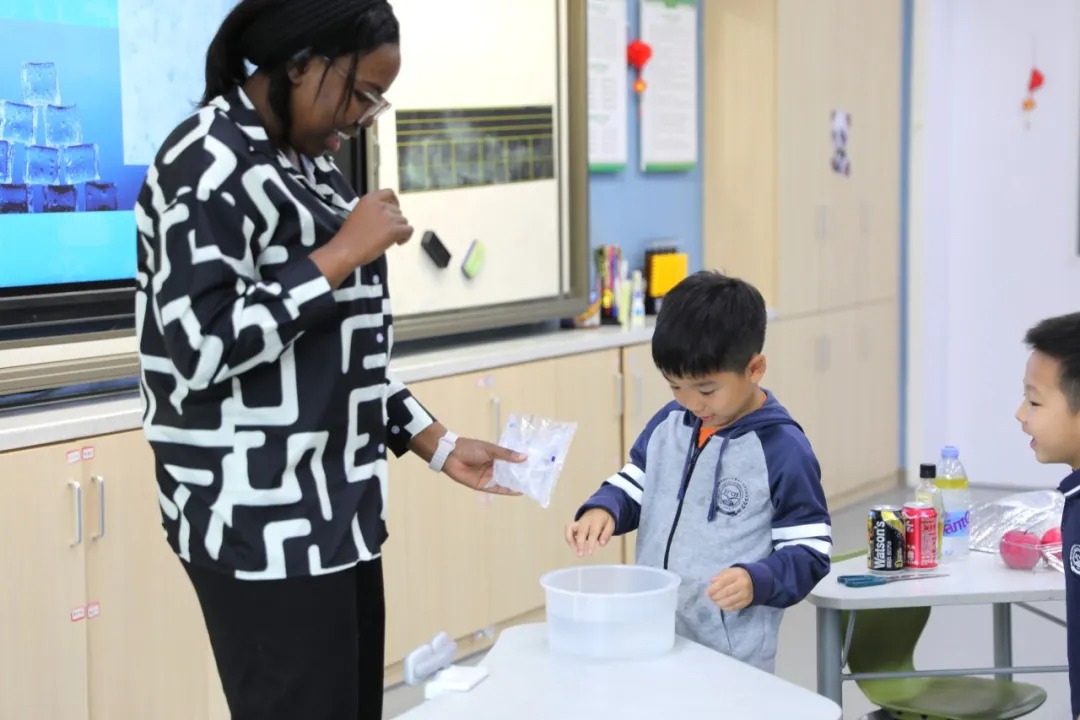
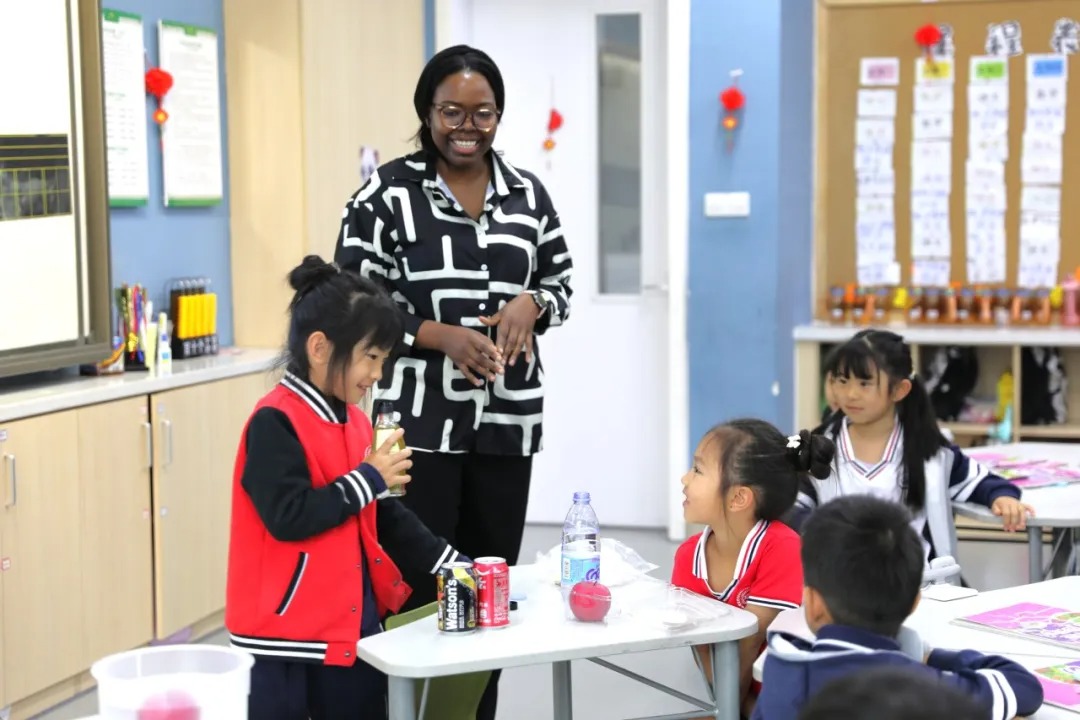
What object floats?
What object sinks?
什么物体可以漂浮,什么物体可以下沉
让我们在一年级2班英语课上找答案吧!
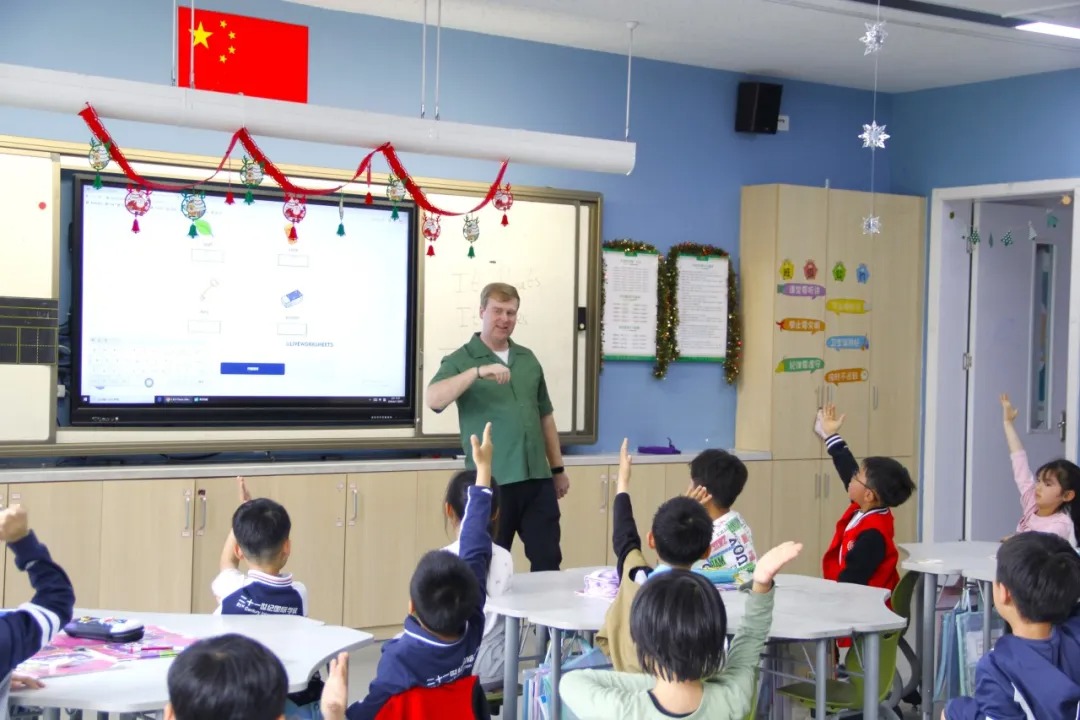
Matthew 老师:这节课是关于漂浮和下沉的。学生们使用假设检验来记录他们认为哪些物体会浮起来,哪些会沉下去,然后进行动手实验来找到实际的结果。
Teacher Matthew: This lesson was about floating and sinking. Students used hypothesis testing to record what objects they thought would float and sink and then performed hands-on experiments to find the actual results.
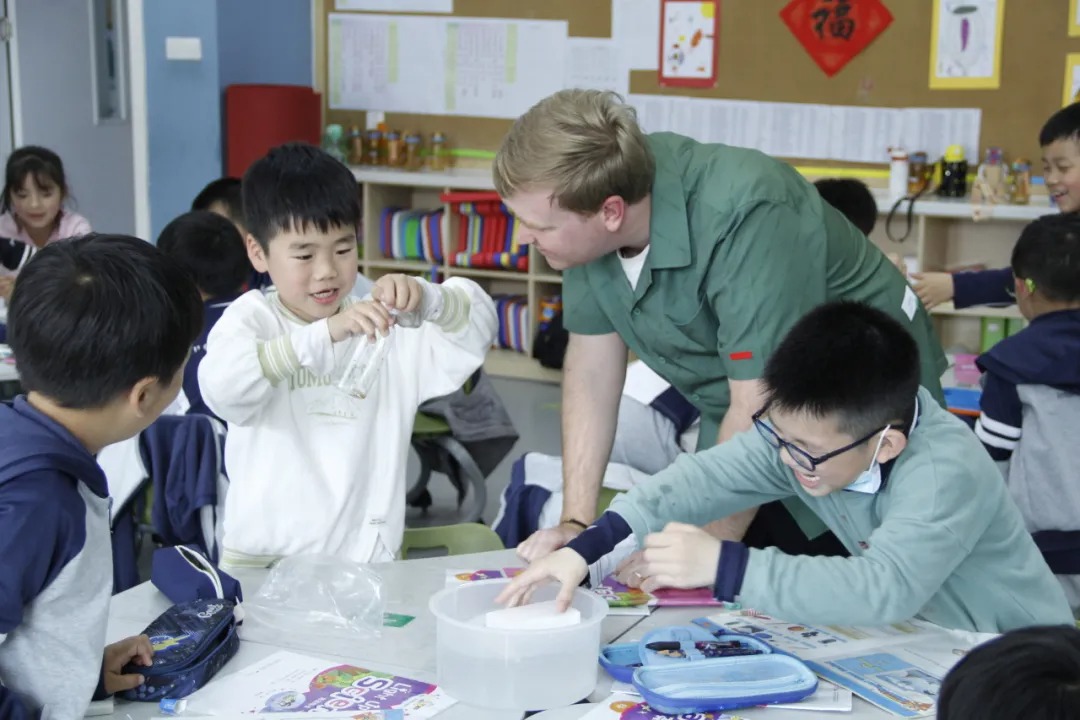
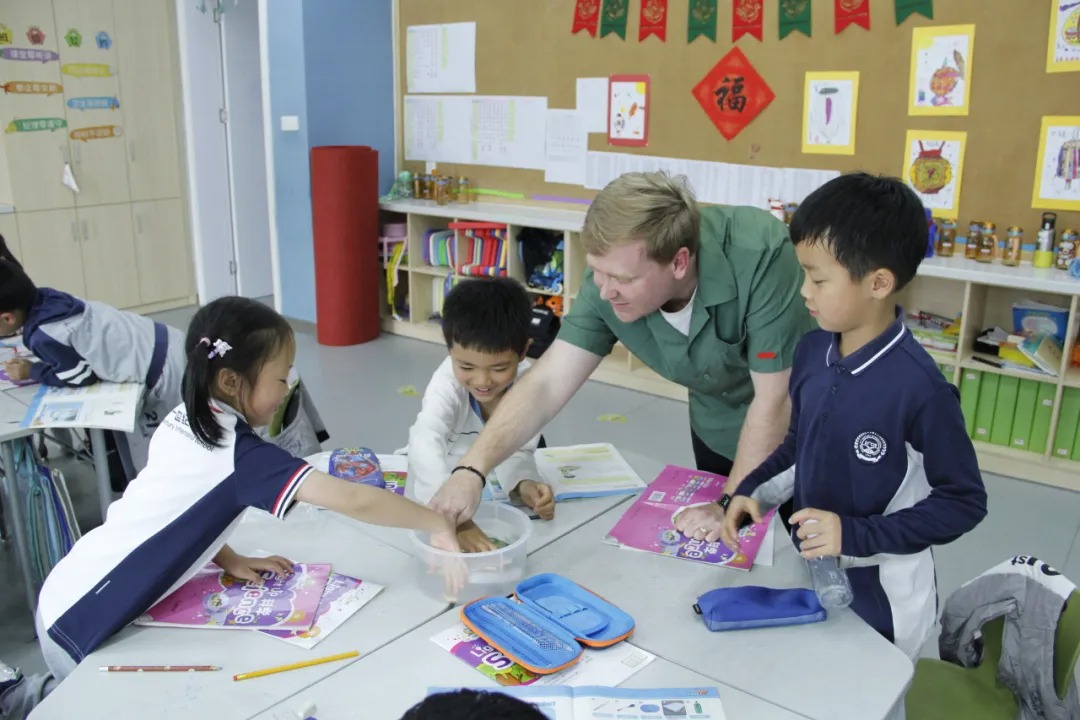
一年级3班英语科学融合课:认识植物Plants
一颗植物的主要组成部分有哪些?
植物的哪些部分是可以食用的?
这些用英语怎么表达?
快来一年级3班外教课堂学习吧!
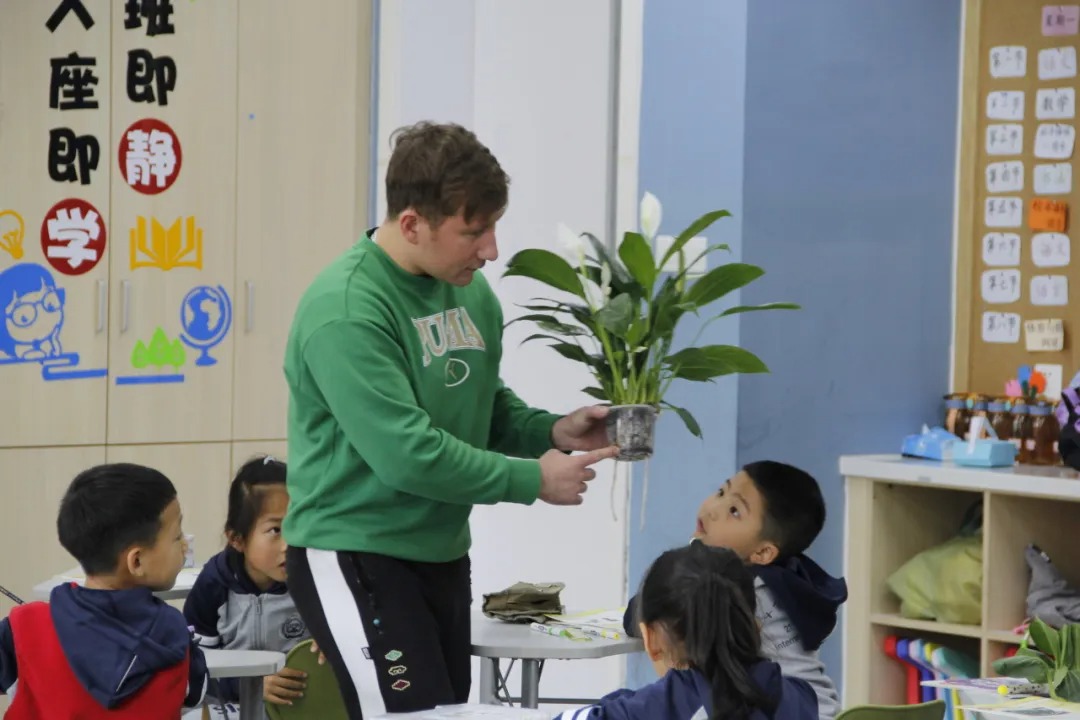
Quinten 老师:在这节课中,学生们学习了植物有不同的部分。学生们学习了树叶如何变成不同的形状、大小和颜色。他们画出了不同形状的叶子,并用叶子创作了自己的图片;还了解了不同类型的蔬菜,并能够与他们互动。
Teacher Quinten: In this lesson, students learned that plants have different parts. Students learned how leaves can be different shapes, sizes, and colors. They then drew the different shaped leaves as well as created their own pictures using leaves. Students also learned about different types of vegetables people eat and were able to interact with them.
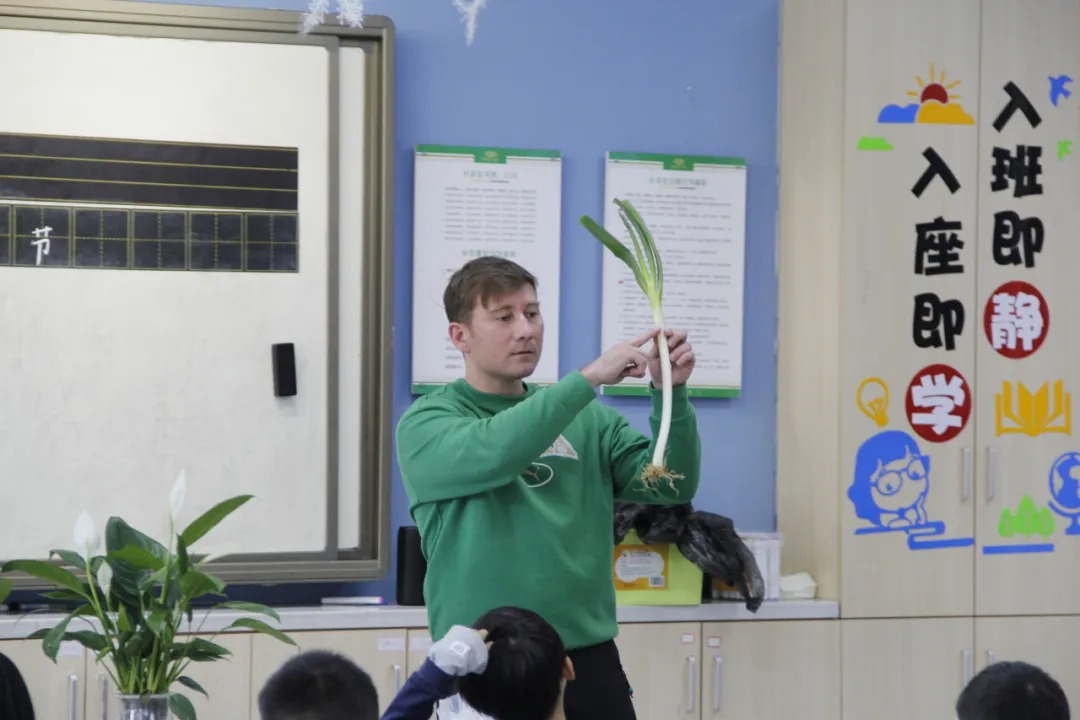
The window is made of glass!
物质与材料,二年级1班英语课堂。
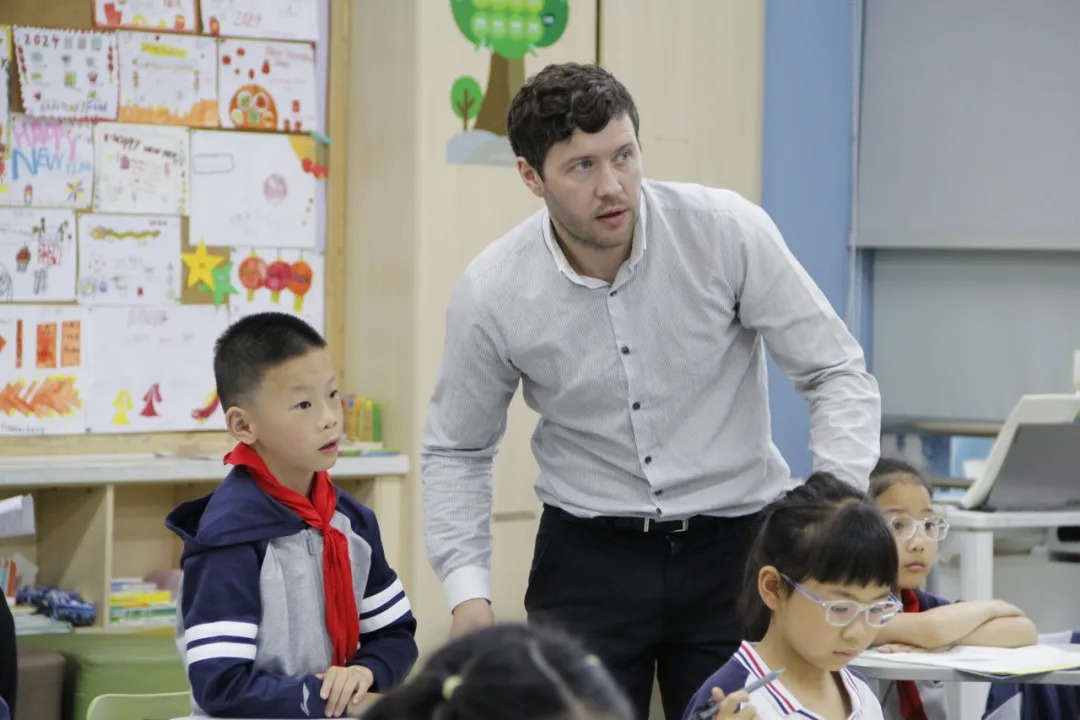
Paul 老师:在这节课中,我们想要确定哪种材料最适合做浴帽。我们在四种不同的材料(纸、塑料、铝箔和棉花)之间做出决定,通过做一个实验来测试哪种材料是防水的。我们把这些材料粘在玻璃杯上,然后在上面浇上水。接下来,我们讨论了使用铝箔或塑料(两种防水材料)制作浴帽的优缺点,得出的结论是塑料是最好的。
Teacher Paul: In this lesson, we wanted to establish which material was the most suitable for making a shower cap. We decided between four different materials (paper, plastic, foil, and cotton) by doing an experiment testing which one(s) were waterproof. We did this by attaching the materials to glasses and then pouring water on top. Following that, we then discussed the advantages and disadvantages of using either foil or plastic (the two waterproof materials) to make a shower cap; coming to the conclusion that plastic was best.
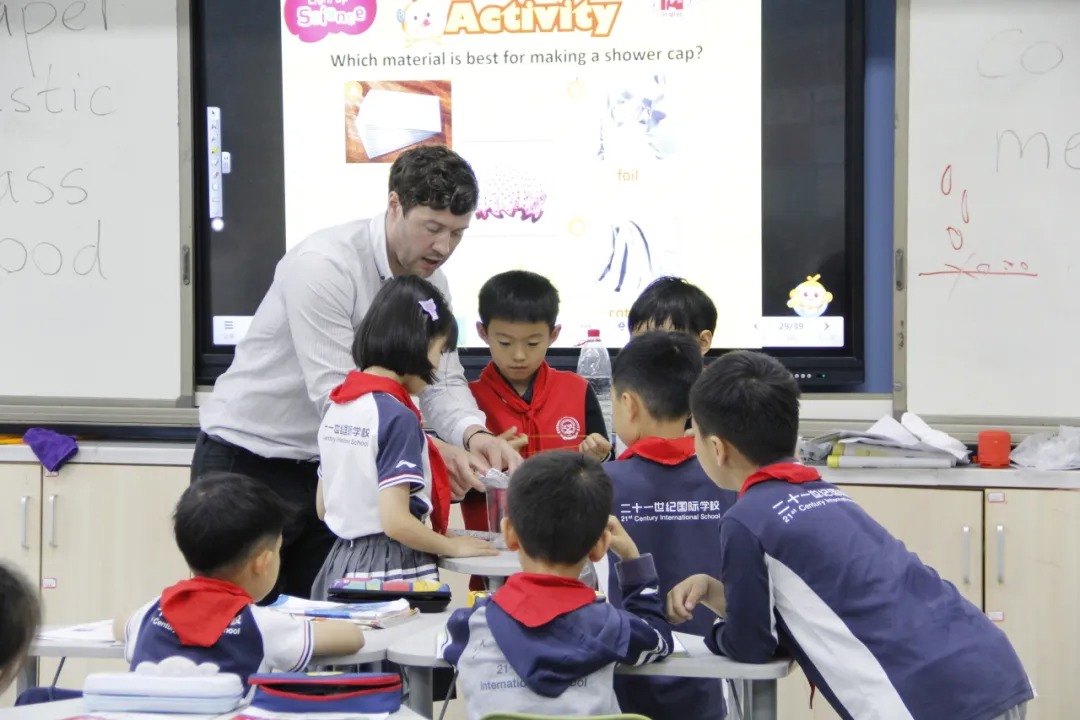
How to make a paddle?
快来看看二年级3班的小朋友
跟着外教老师如何制作船桨的!
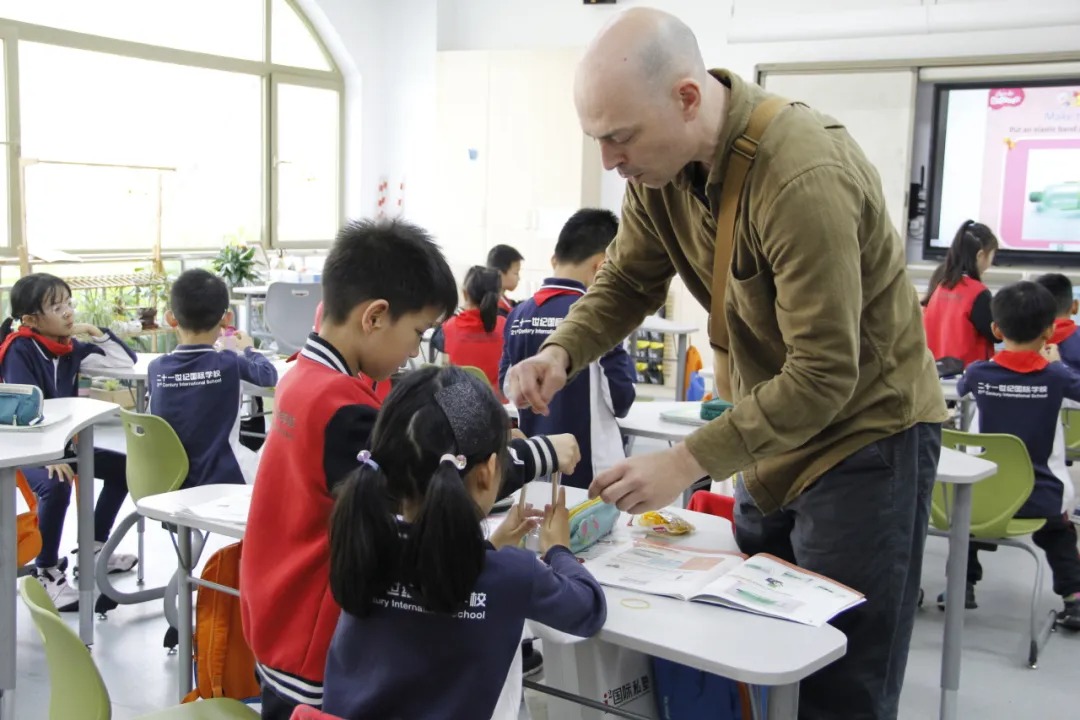
Thanos 老师:在本课中,我们通过动手活动来探索浮力的迷人概念。学生们用简单的材料建造自己的桨船。通过这个活动,他们对物体如何在水上漂浮和移动有了更深的了解。
Teacher Thanos:In this lesson, we explored the fascinating concept of buoyancy by engaging in a hands-on activity. Students had the opportunity to construct their own paddle boats using simple materials. Through this activity, they gained a deeper understanding of how objects float and move on water.
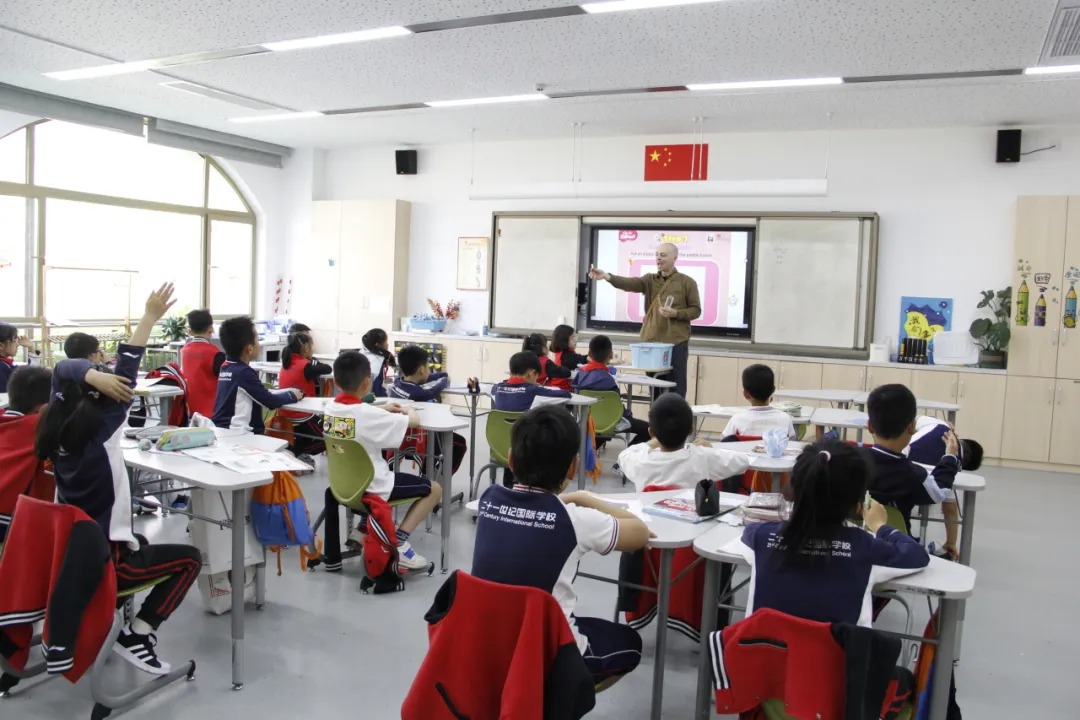
质量和体积,通过这节课,
三年级1班的孩子们就掌握了相关的英语表达,
Mass and Volume.
不过还是被最后出现的化学元素表震惊到了!

Colin老师:这堂课是第一单元的结尾,是质量、面积和体积这三部分的综合。我们快速浏览各种元素立方体,然后学生们通过测量,称重和体积测试,用计算器计算密度。
Teacher Colin: The class is the end of Unit 1 and a synthesis of the three parts, mass, area, and volume. I have added density because it’s easy enough to put it into the experiment. We'll go through the various elemental cubes quickly then the students will measure, weigh, and volume test them, do the math (with calculator) on density.
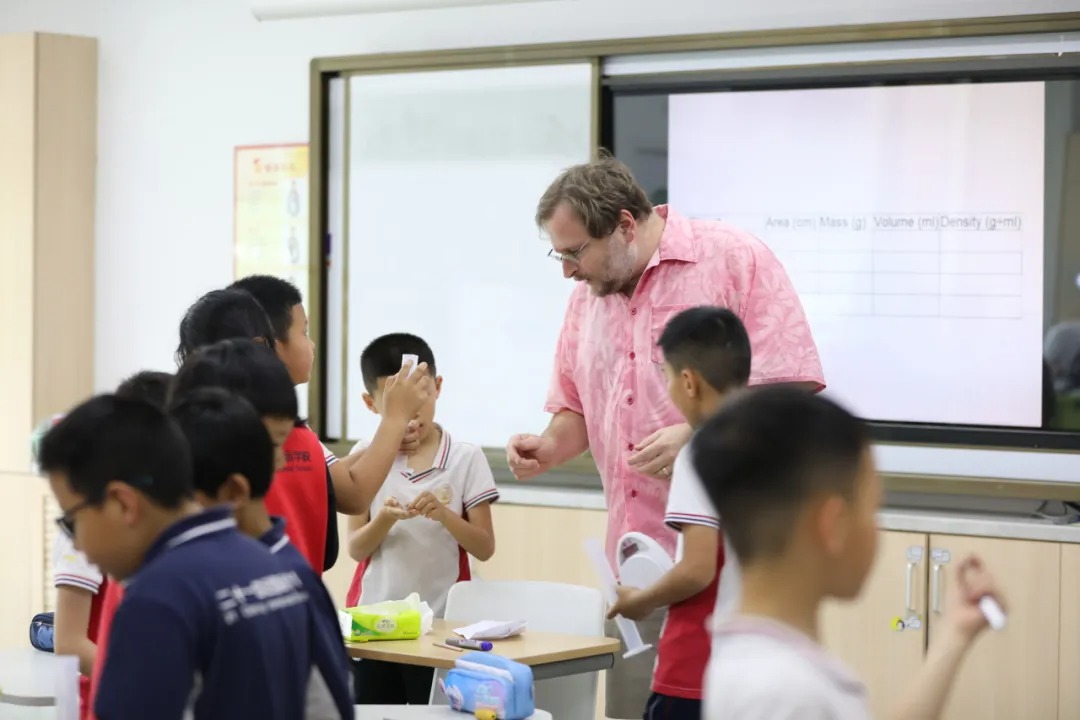
不同物质的重量和称重多少?
三年级2班外教英语科学课给你答案!

Ricco 老师:这节科学课是测量体积和质量的练习。学生们学习了不同的元素,计算出密度并记录下来。
Teacher Ricco: This practical science lesson was about all practicing measuring volume and mass in groups. Students learned about the different elements, working out densities and recording it.

物质的质量与体积如何测量?
Mass and Volume 带你走进三年级3班外教课堂!

Henry 老师:这节科学课是关于分别测量体积和质量的练习。学生们走到户外,寻找不同的物体进行测量,然后记录他们的发现。
Teacher Henry: This practical science lesson was about all practicing measuring volume and mass individually. Students went outside and looked for different objects to measure and then recorded their findings.
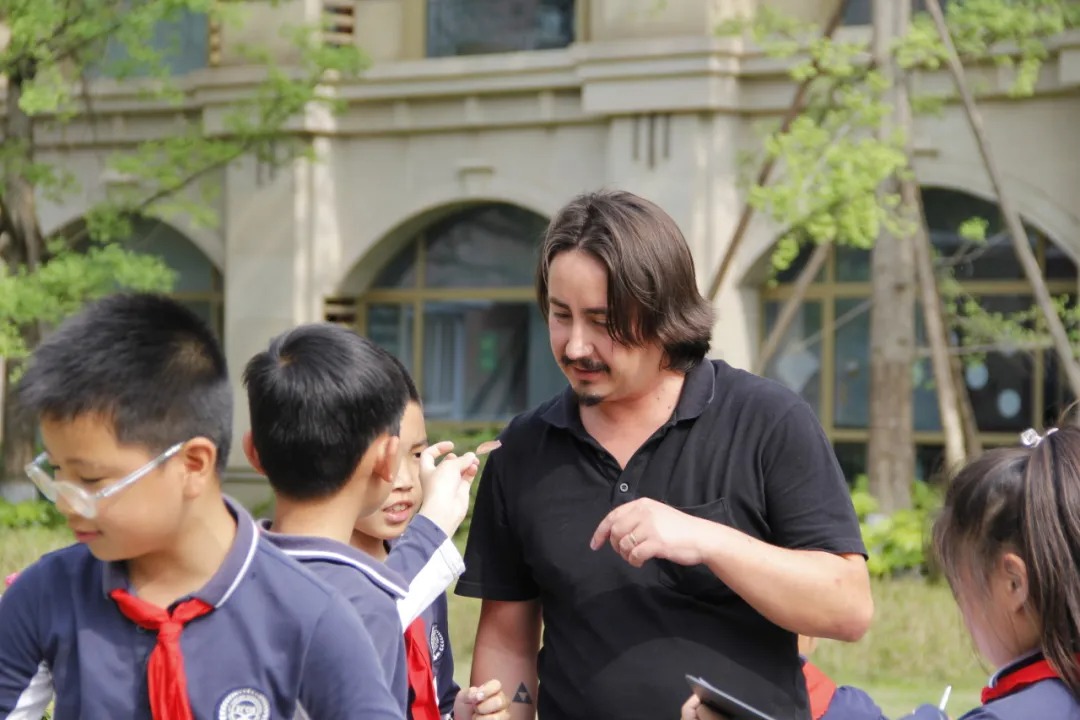
How to make a complete circuit?
如何做一个完整的电路?
快来我们三年级4班的英语课堂!

Nicolas老师:在这节科学课中,我们学习了电路。学生们学会了识别电路的组成部分,包括电池、电线和灯泡。通过实践活动和演示,学生们能够区分一个完整的电路和一个不完整的电路,电流的持续流动及中断。
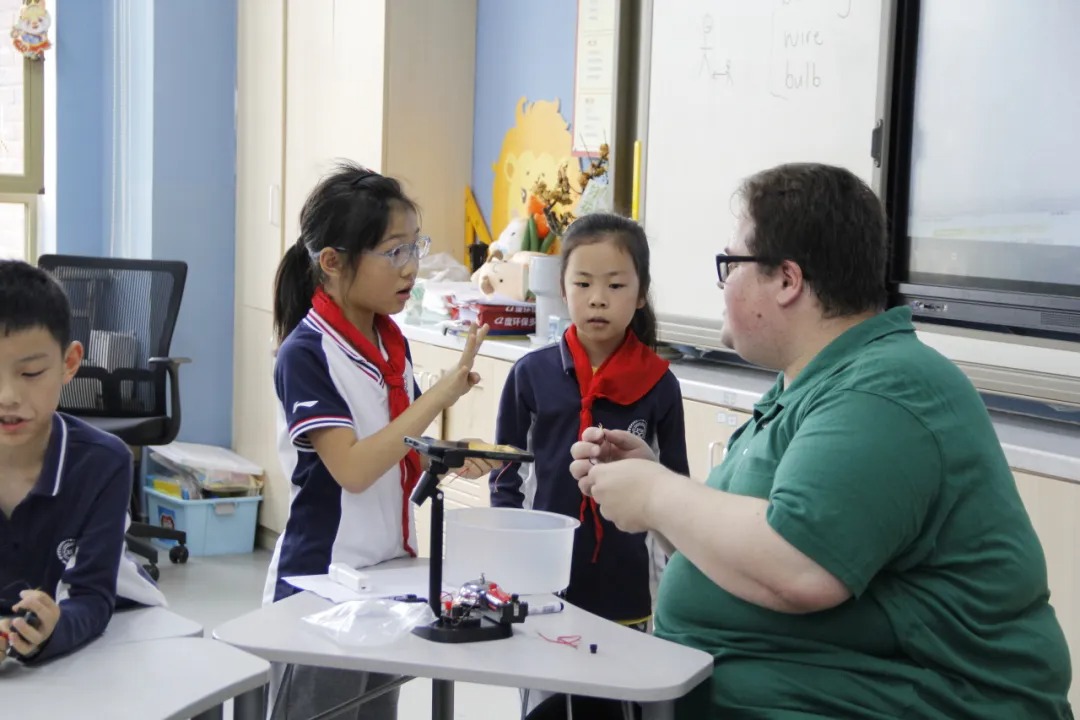
植物是如何授粉的?
一起跟着四年1班级外教走进春天的课堂:
Wind Pollination
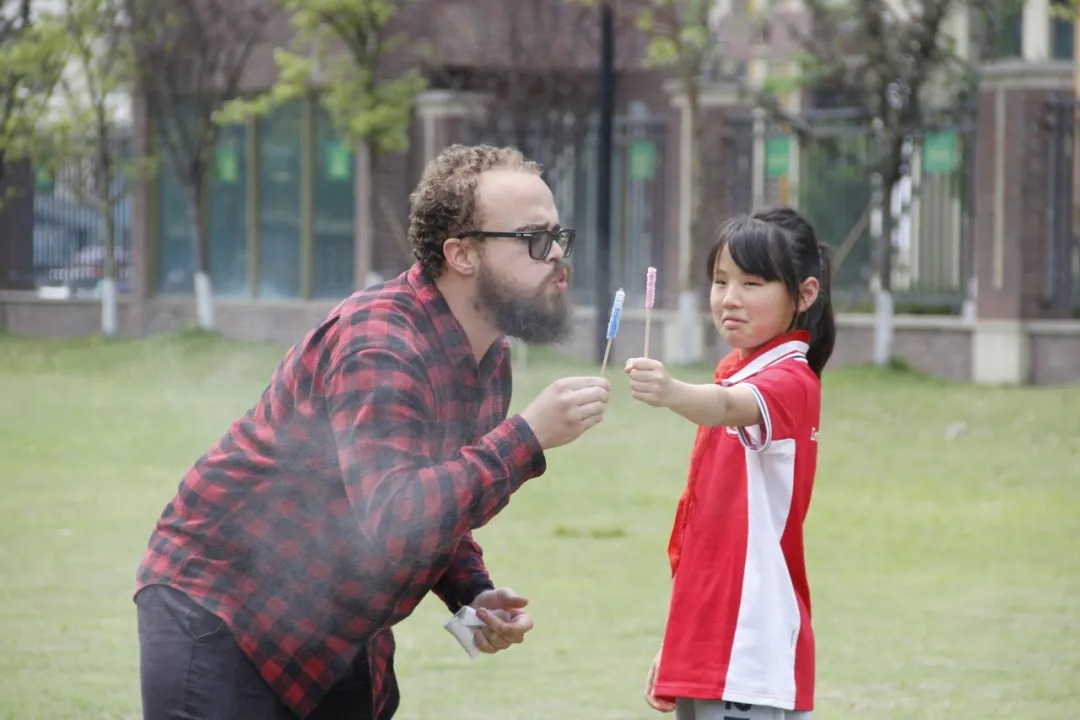
Morne 老师:本课以上一课的内容为基础,延续本单元的主题。主题是授粉。上一课我们介绍了蜜蜂是如何帮助花朵授粉的。本节课我们学习了花草以及风如何帮助它们授粉。学生通过刷子和面粉的实验来观察风传粉的过程。
Teacher Morne: This lesson builds on the content of the previous lesson and continues the theme of the unit. The theme is pollination. The previous lesson we covered how bees help flowers to pollinate. In this lesson we looked at grassy flowers and how wind helps them to pollinate. Students observed the process of wind pollination through an experiment involving brushes and flour.

不同类的牙齿有不同的功能,
让我们一起跟随四年级2班的外教课堂一探究竟!

Jessica 老师:在这节课中,学生们观察自己和朋友的牙齿。他们数自己的牙齿,并与别人比较。然后他们观察不同形状的牙齿,这些不同的形状被应用于不同牙齿的作用,例如,门牙用来咬食物,磨牙用来咀嚼食物。
Teacher Jessica: In this lesson, students explore their own teeth and those of their friends. They count their own teeth and compare theirs with others. They then observe the teeth and become familiar with the different shapes of teeth. These different shapes are then applied to the roles of different teeth, for example, the incisors in biting food, and the molars in chewing food.
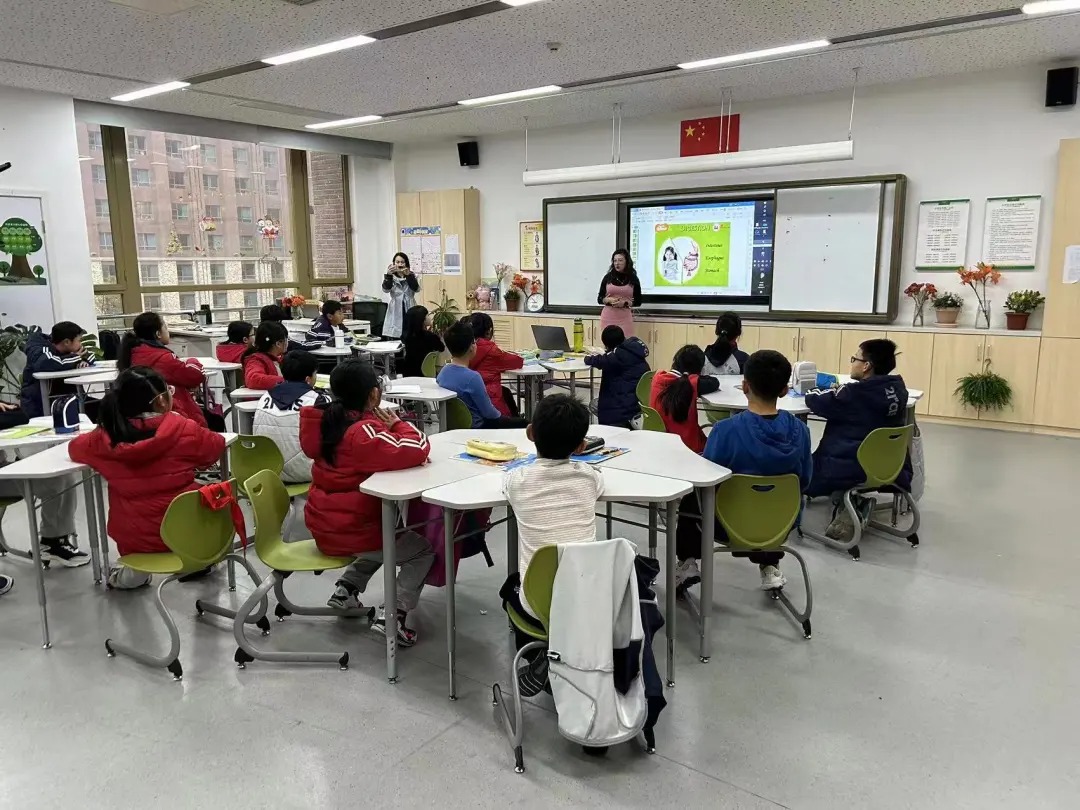
水在自然界是如何循环的?
四年级3班英语课堂Water cycle给你答案!
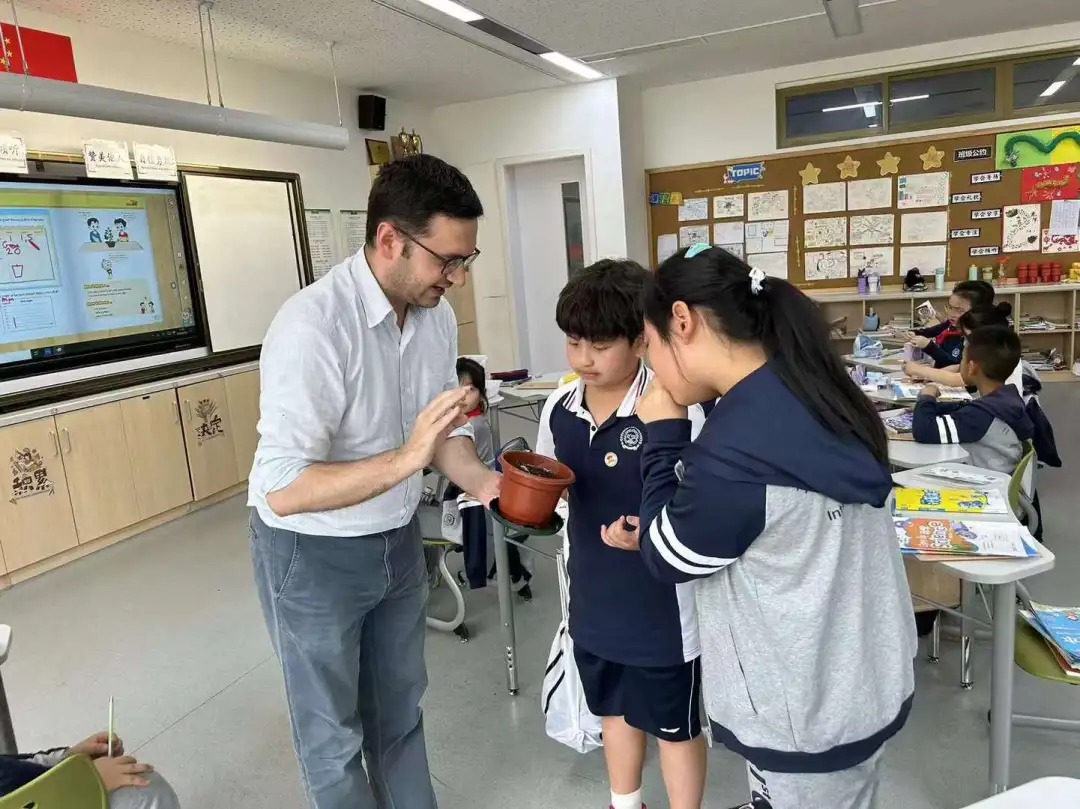
Niko老师:在科学课上,我们介绍了水循环,展示环境循环过程,即来自山区的雨水如何形成河流,然后流入海洋,再次蒸发凝结成云,最终再次成为雨。我们用实验来展示山脉是如何形成河流的,以及冷热温差是如何产生凝结的。
Teacher Niko: In the science lesson we covered of the water cycle, it's purpose is to demonstrate the environmental cycle process of how rain coming from the mountains create rivers and then flows into the sea with a result of it being evaporated condensing once again into clouds and ending up as rain again. Experiments were used to showcase how mountains form rivers and how temperature differences of hot and cold create condensation.
气球为什么会飞,
轮船为什么会漂浮在水面?
五年级2班外教英语科学课带你学习不同力的作用。Forces!
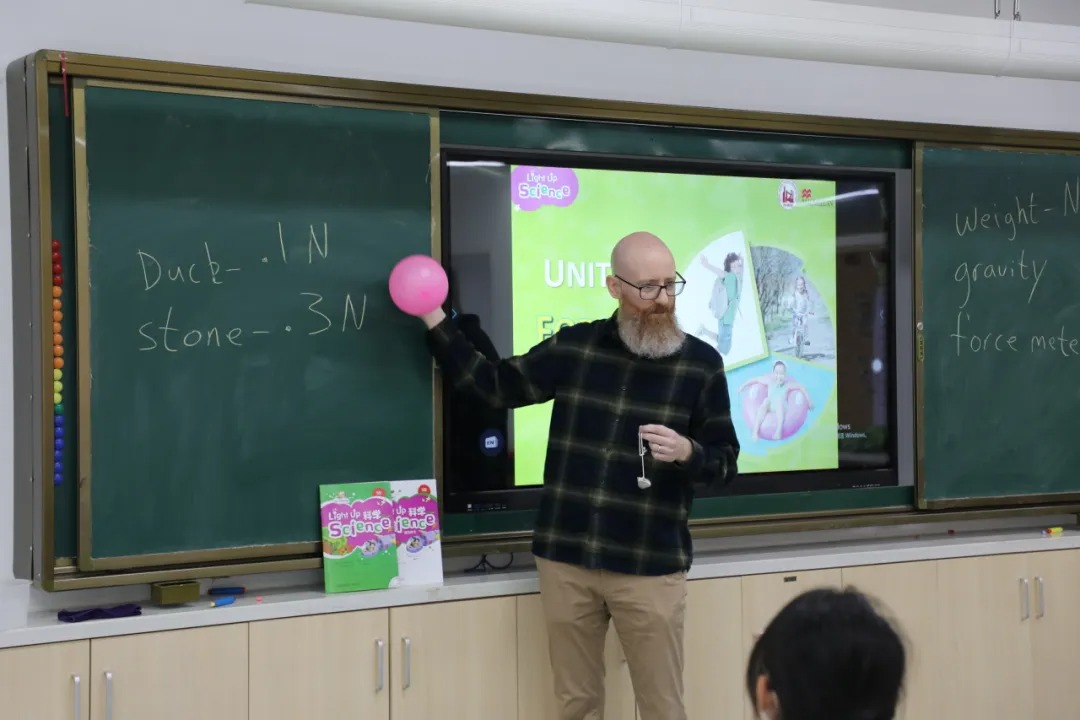
Levi老师:本课程建立在学生对力的理解上,通过之前学的重力知识来理解上冲。通过先在空气中称重,然后在水中称重,学生们能够看到两种力量的作用,并更好地理解它们。
Teacher Levi: The lesson builds on students' understanding of forces by using their prior knowledge of gravity to understand upthrust. By weighing things first in the air and then in water students are able to see both forces at work and gain a better understanding of them.
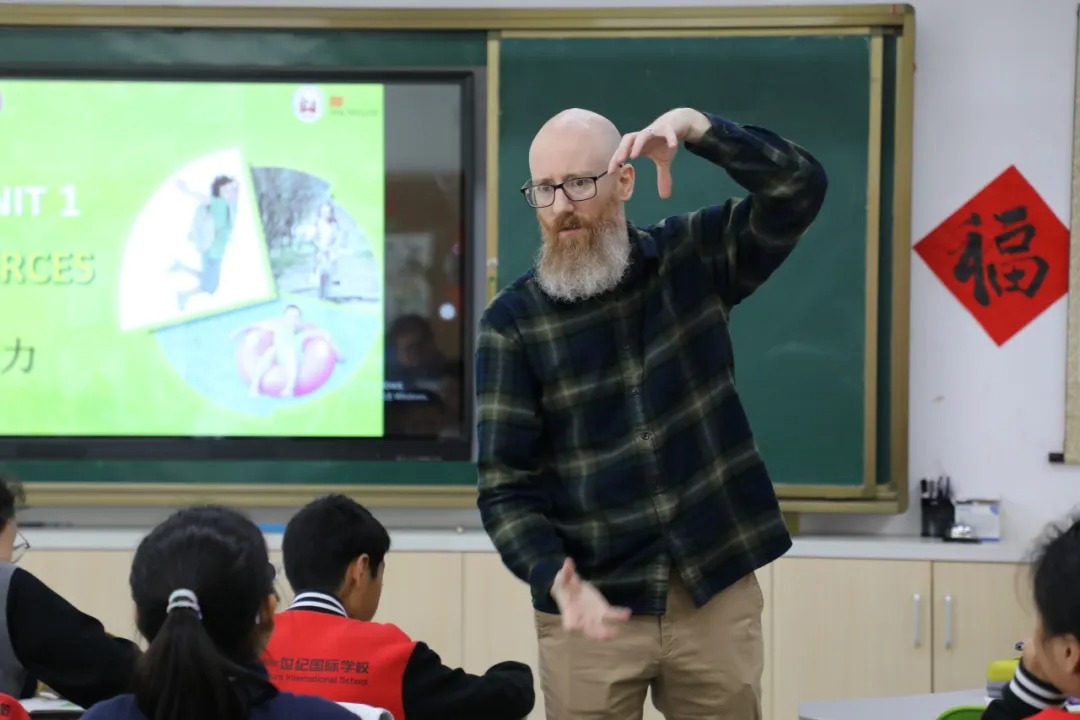
Where does the energy come from and where does it go?
能量来自哪里,最终又去向哪里?
六年级1班外教课:食物链food chain 给你答案!
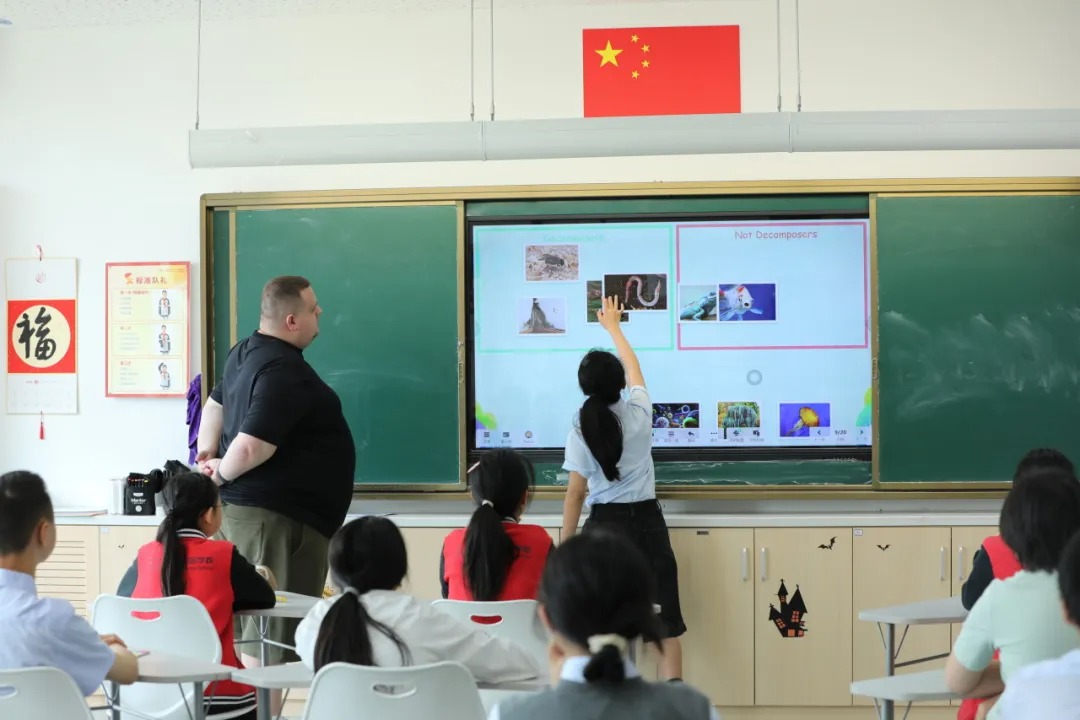
Aaron老师:本课我们讨论了不同生物之间的能量传递。学生们了解了生物获取能量的不同方式,以及生产者、消费者和分解者的不同之处。然后学生们分成小组设计他们自己的食物网。最后,学生们能够掌握生态平衡的重要性,以及能源从哪里来,又去了哪里。
Teacher Aaron: In this lesson we discussed the transfer of energy between different living things. Students learned about the different ways living things get energy, and what the difference producers, consumers, and decomposers is. Students then worked in small groups to design their own food web. In the end, students were able to grasp the importance of ecological balance and where energy comes from, and where it goes.
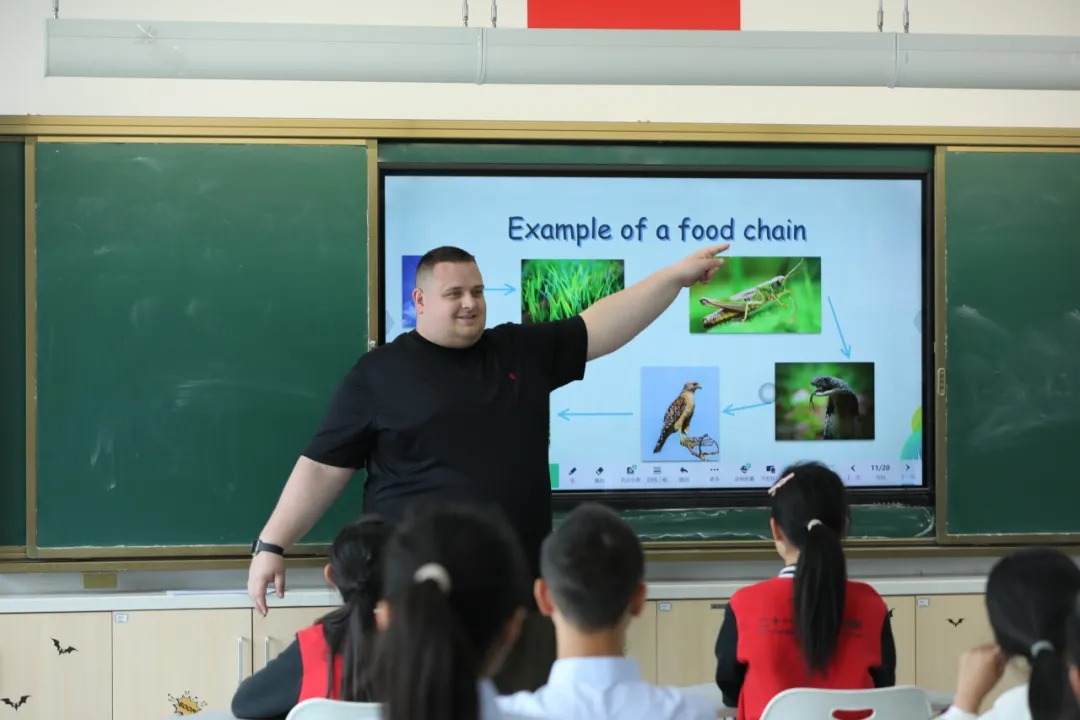
Dissolving and separation
六年级3班带我们一起学习物质的溶解与分离!
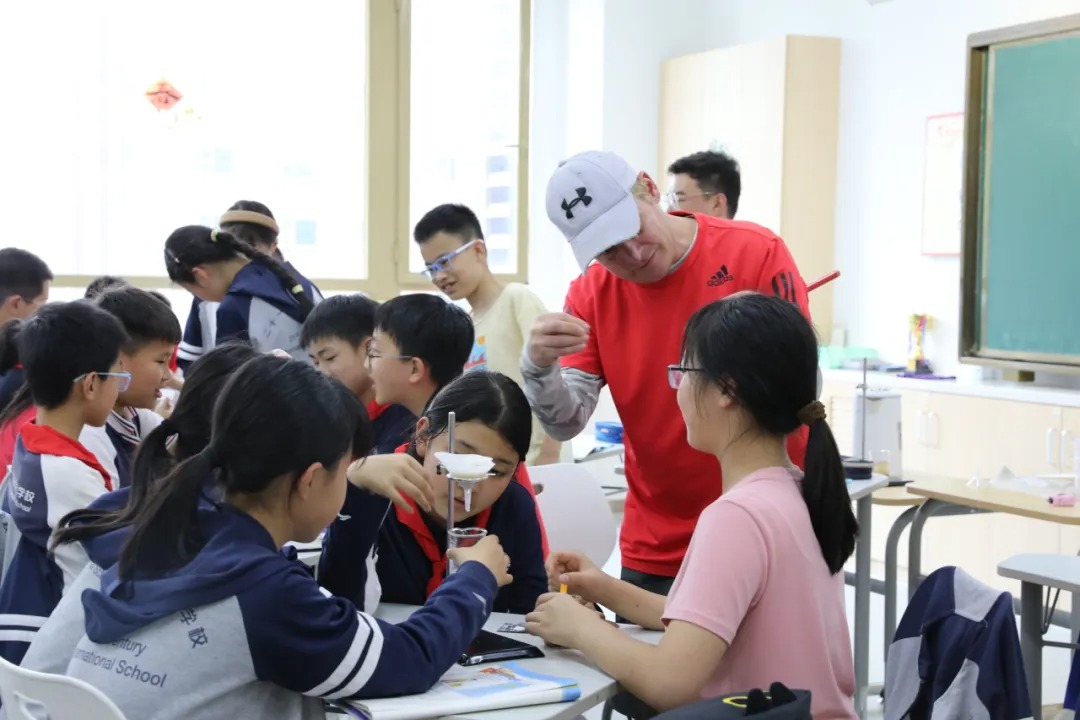
Michael老师:我们学习了将一种或多种物质溶解到另一种物质中(即糖溶解到水中)以产生混合物。我们还学了用蒸发或过滤来分离混合物,观察了工作中的分离和过滤。我们制造了一种沙子、盐和水的混合物,试图用过滤器把混合物分离出来。学生经过试验分析了结果,明白了过滤器分离了什么物质,烧杯里的是什么物质以及为什么。
Teacher Michael: In this unit, we learned about dissolving one or more substances into another (i.e. sugar into water) to create a mixture. We also learned that we can separate the mixture using evaporation or filtration. In this final experiment, we observed separation and filtration at work. We created a mixture of sand, salt, and water. Using a filter, we attempted to separate the mixture. We noted and analyzed the results. What substance(s) were separated by the filter? What substance(s) ended up in the beaker? Why?
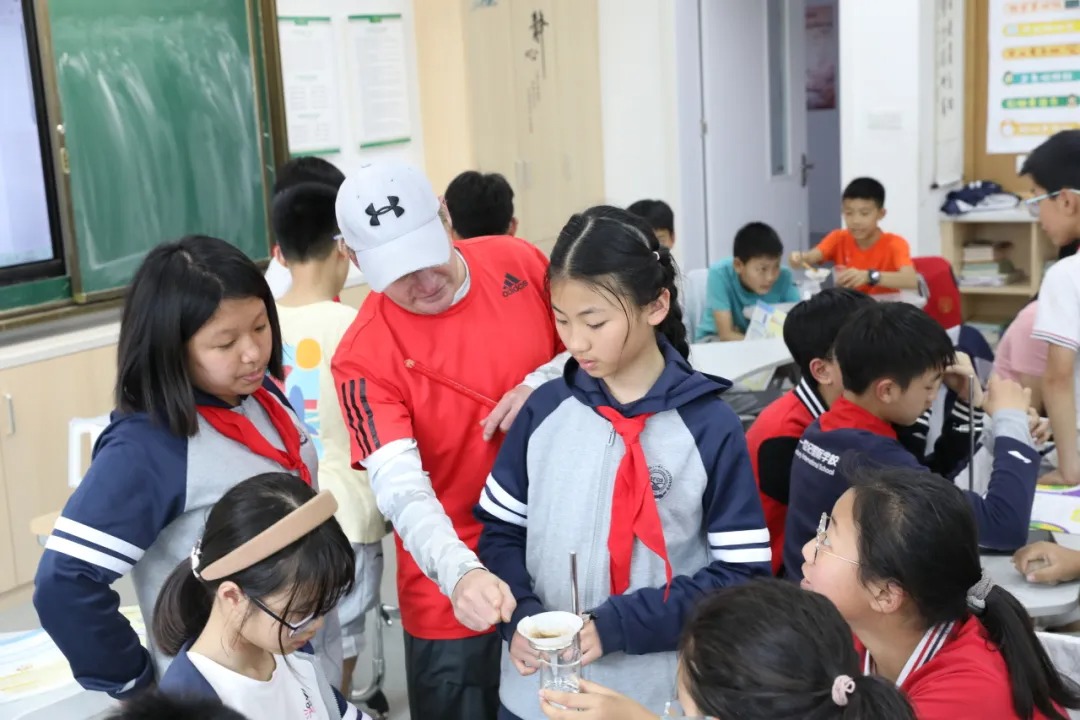
下雨了,你知道雨水是从哪里来的吗?
你知道用什么方法可以分离混合物吗?
你是否好奇有的东西可以浮在水面,而有的物体却沉入水底?
你是否知道船桨是如何帮助船只前进,如何与水产生作用力
你是否知道植物是如何生长和繁殖?
.....
每一堂外教科学融合课中,都藏着思维碰撞的火花,根据年级特点、英语水平,外教加入了生活、语言、自然、生命、常识等多元素融合进课程中,以游戏、实验、情景模拟等形式作为探索过程。他们不仅在教室里,还来到花园、草坪、喷泉边等校园各个场所,在不同角落去观察生活中的科学之美,感受到生命的力量。
课程特色和班级设置
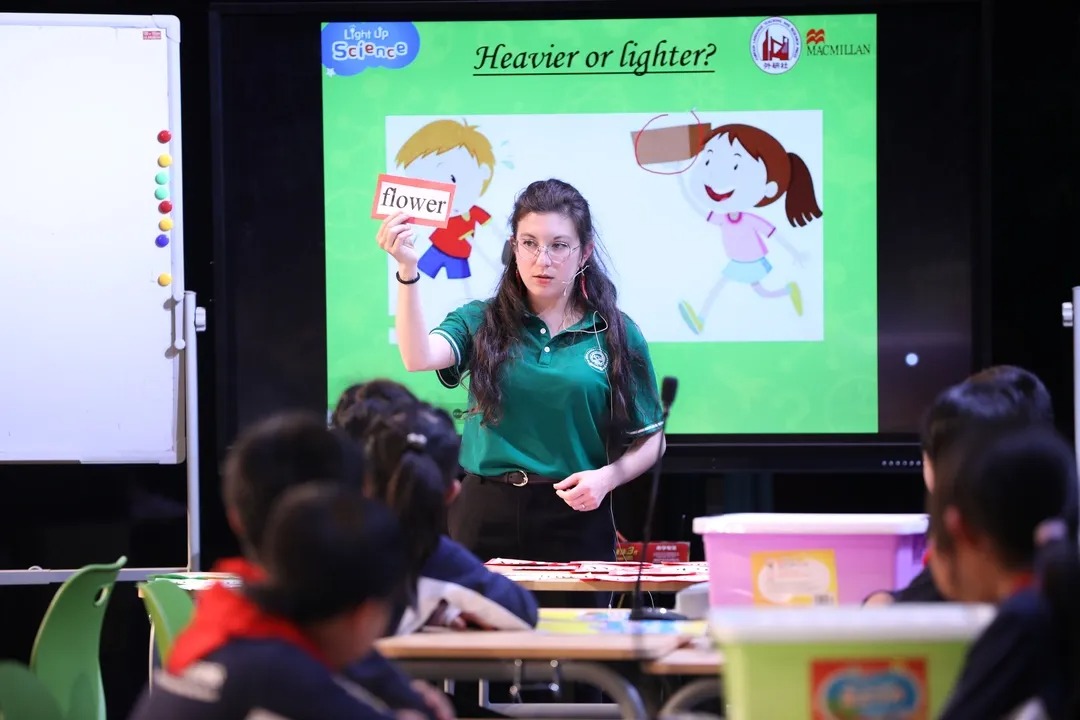
主题融合班由一名外教跟班,外教全部在教室办公,给孩子们营造最佳的语言环境,完全实现“浸润式”教学,小班化教学也让每个学生得到充分关注,让语言学习自然而然的发生。
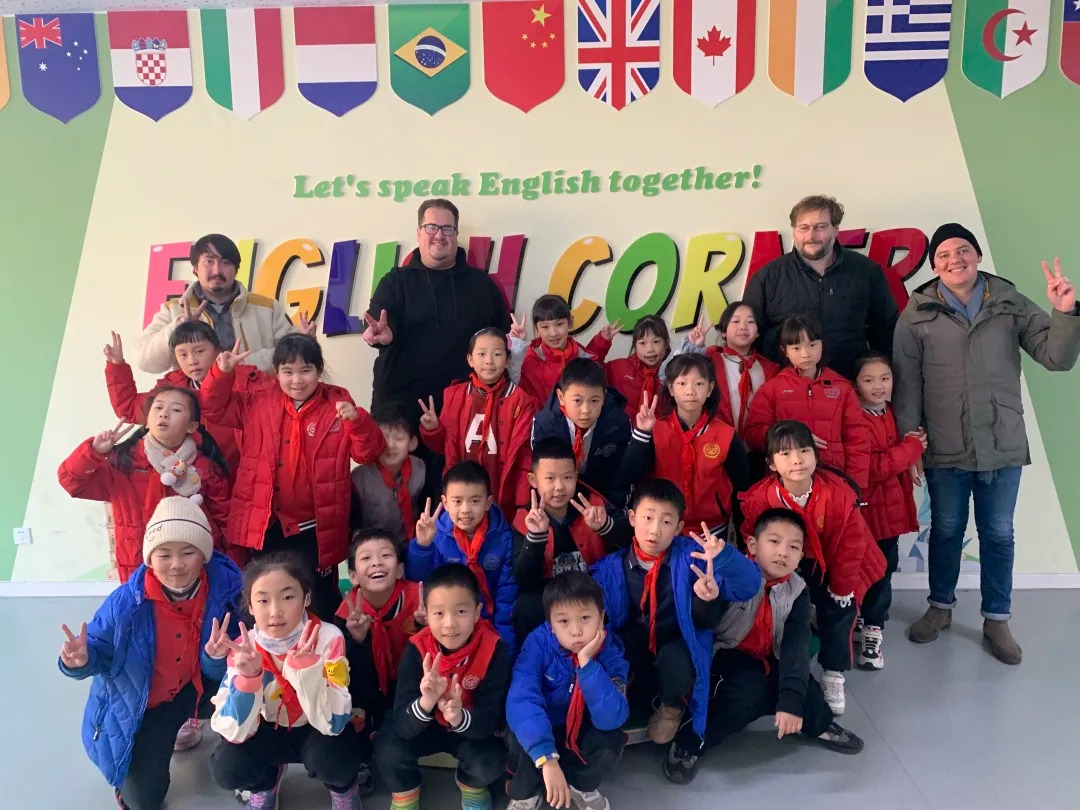
我校小学生英语学习每周达到10-12个课时,中外教课时合理搭配,每周三还有英语角以及英语选修课,让学生和外教开展充分的学习交流互动,提升学生口语表达能力,培养他们对语言的热爱。

Light Up Science是外教教授的四门科目之一(其他三科包括:剑桥少儿英语,阅读和自然拼读)。
Light Up Science是一门将科学内容学习和英语语言学习有机整合的创新课程。既培养了学生英语与科学两大学科的核心素养;又贯彻了英语学习活动观,以学生为中心,为学生提供真实的交际情境,通过让学生自主、合作、探究学习,加强学生的学习体验;同时它还强调通过语言和内容的结合,让学生用英语进行深度学习,聚焦学生的思维培养。让语言的学习伴随着内容的学习而产生,即让学生“即学即用,学以致用”,使学生从传统的“学语言”转变成了“用语言学”,从“学得”变成“习得”,提高学生的英语学习兴趣。
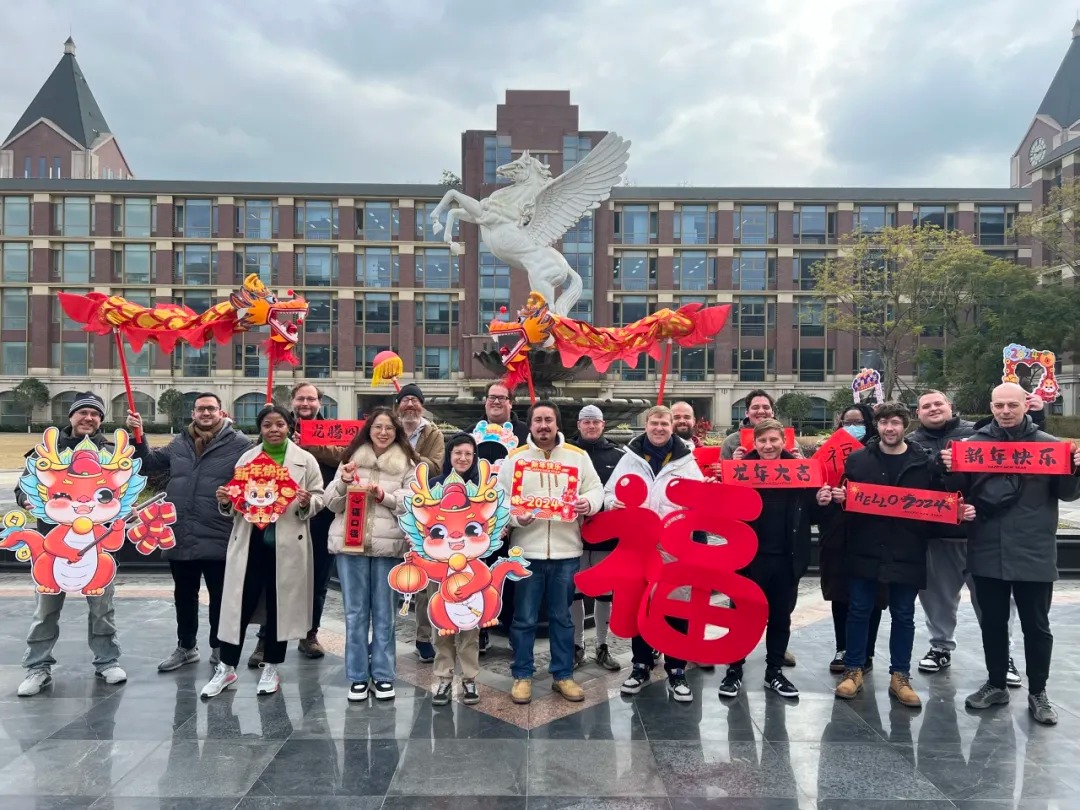
我校外教师资配备充足,小学部目前有18位外教老师,且均来自英语为母语的国家,全部为本科以上学历,并且全部是得到中国教育部承认的学历,持有国际教师资格证。
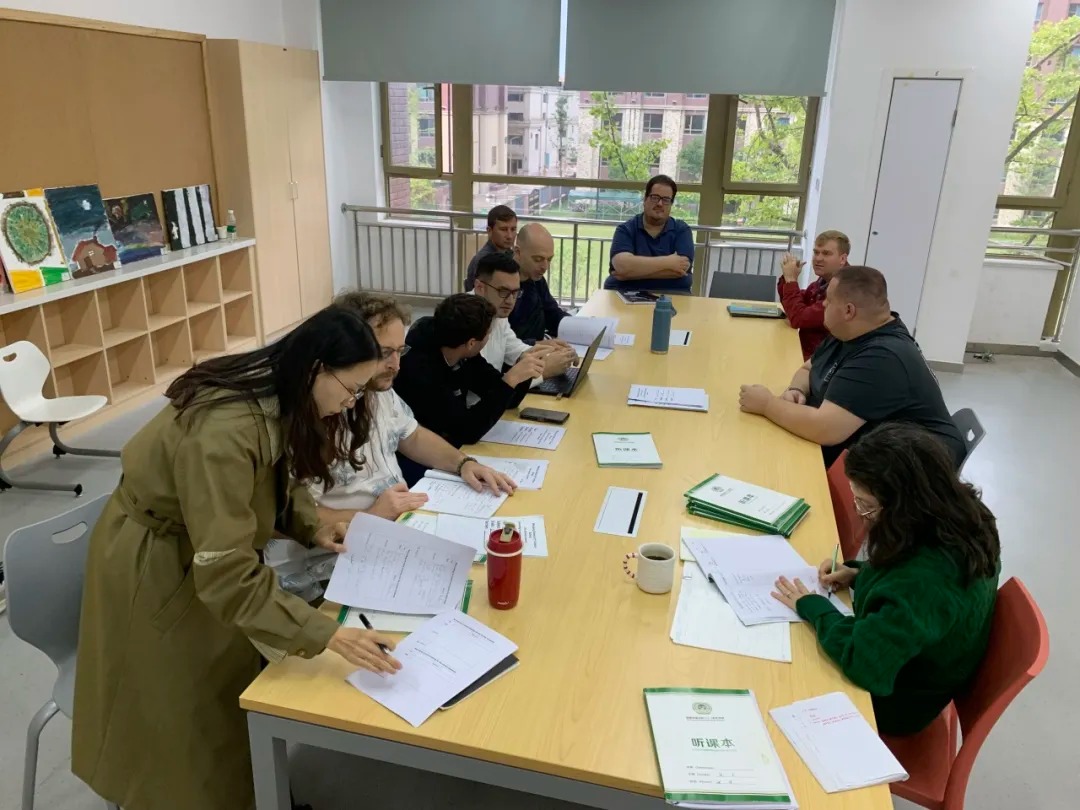
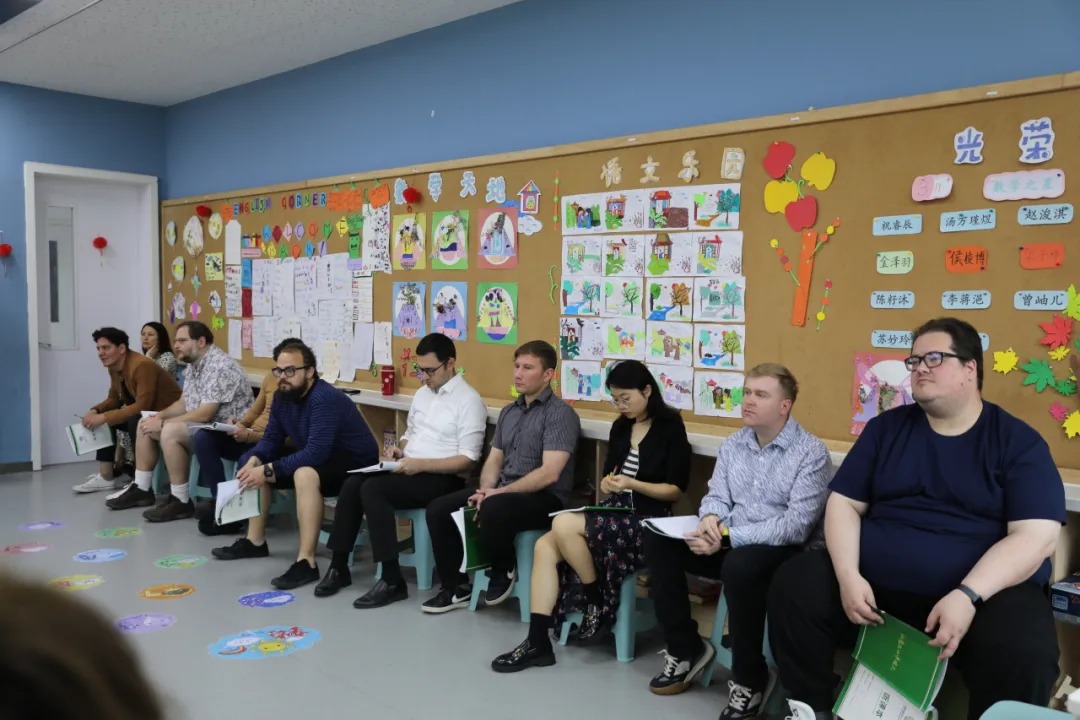
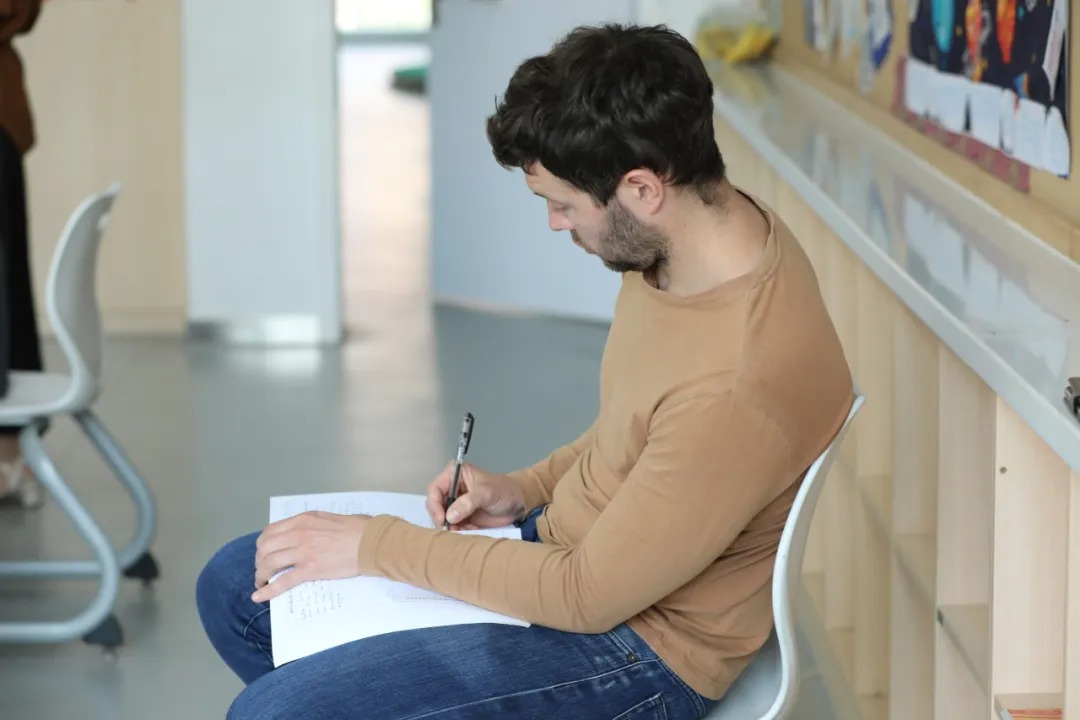
小学部外教组有一套完善的课程体系,每周外教组要固定开展教研会和教学检查,充分保证外教教学质量,同时我们要求每位外教进班听课学习,取长补短,开拓实用的教学方法,提升教学水平。






